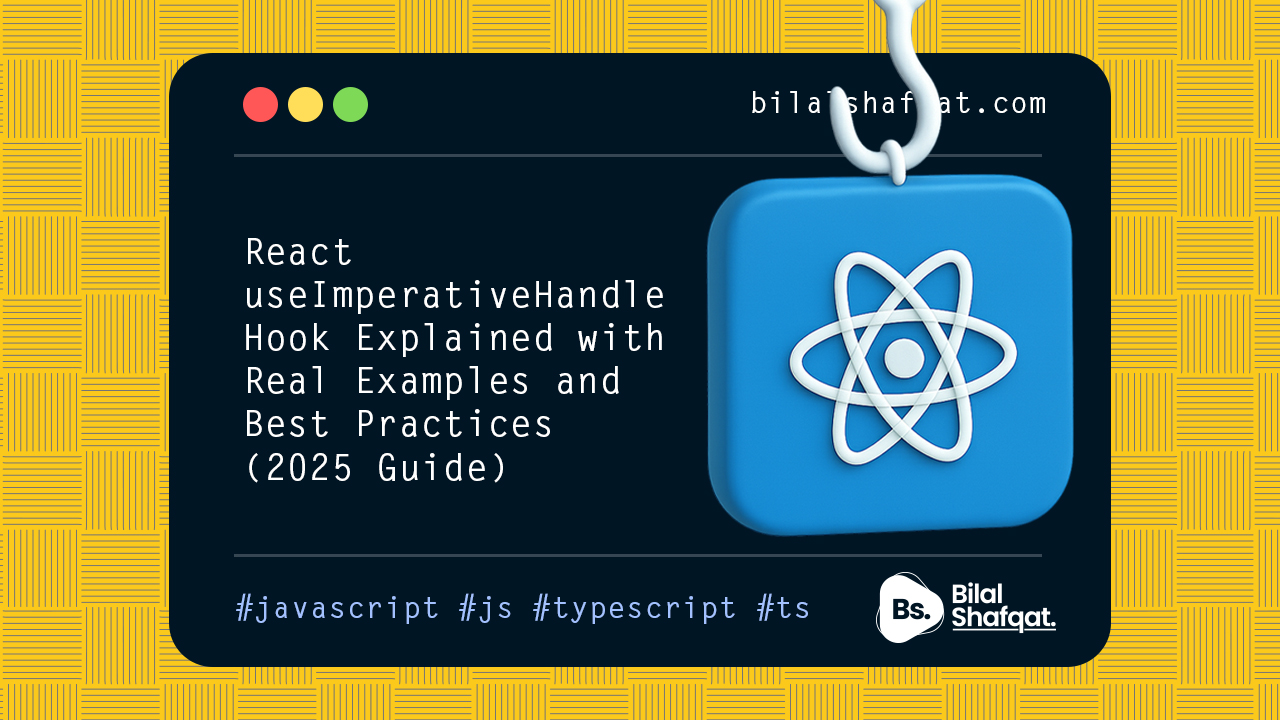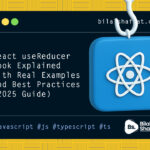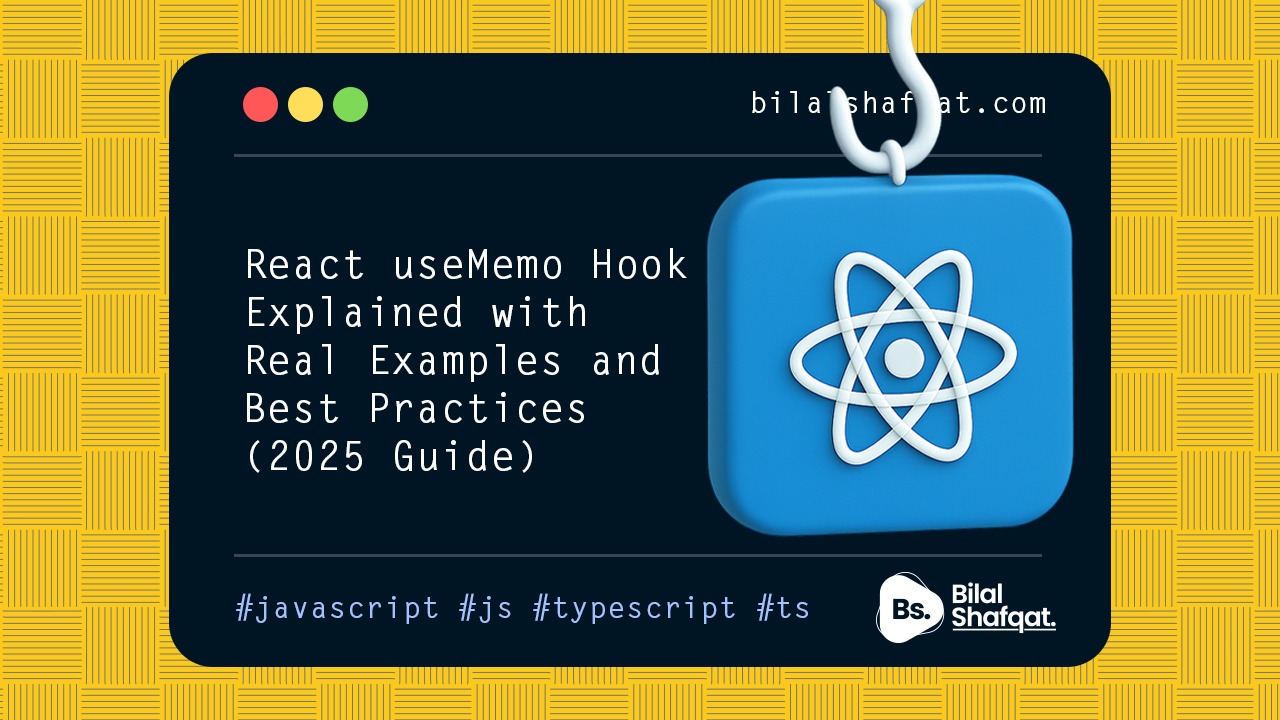
React useImperativeHandle Hook Explained with Real Examples and Best Practices (2025 Guide)
- bilalshafqat42
- July 1, 2025
- React Hooks, React Js
- 0 Comments
Ever needed to call a function inside a child component — from the parent? React’s useImperativeHandle hook makes that possible. Learn how and when to use it with examples and tips.
Introduction
Most React developers use ref for accessing DOM elements. But what if you want a parent component to trigger a custom method defined inside a child component?
That’s where useImperativeHandle() comes in. It lets you define exactly what a parent can do with a ref passed to a child component. Combined with forwardRef(), this hook gives you a controlled way to expose internal functionality of a component — without breaking encapsulation.
In this guide, you’ll learn:
- What
useImperativeHandledoes - When and why to use it
- How to combine it with
forwardRef() - Real-world examples (like focus and reset)
- Common mistakes and best practices
What is useImperativeHandle?
useImperativeHandle is a React hook that lets you customize what gets exposed through a ref from a child component to its parent. It works in combination with forwardRef().
Why it exists:
Normally, a ref gives access to the DOM node or component instance. But with function components (which don’t expose instances), you need a way to expose specific methods or values.
Syntax:
useImperativeHandle(ref, () => ({
methodName() {
// custom logic
}
}), [dependencies]);
Basic Example: Exposing a Method from a Child
Step 1: Create the child component with forwardRef
import { useImperativeHandle, forwardRef } from 'react';
const CustomInput = forwardRef((props, ref) => {
const inputRef = useRef();
useImperativeHandle(ref, () => ({
focusInput() {
inputRef.current.focus();
}
}));
return <input ref={inputRef} />;
});
Step 2: Use it in the parent
function Parent() {
const inputRef = useRef();
return (
<>
<CustomInput ref={inputRef} />
<button onClick={() => inputRef.current.focusInput()}>
Focus Child Input
</button>
</>
);
}
Now, clicking the button in the parent calls a method defined inside the child component.
When Should You Use useImperativeHandle?
useImperativeHandle is ideal for:
- Exposing controlled APIs from reusable components
- Accessing
focus(),scrollIntoView(), orreset()methods - Form libraries with uncontrolled inputs
- Custom behaviors like animations, validators, or measurements
Common Real-World Use Cases:
- Auto-focus an input or text field
- Resetting internal state of a form
- Triggering a scroll or highlight in a nested list
Don’t Use It For Everything
Don’t use useImperativeHandle if:
- Props or context can do the job
- You’re trying to update state inside the parent
- You can lift the state and pass it down instead
useImperativeHandle is for special cases — not general data flow. If used incorrectly, it can break unidirectional React data patterns.
Comparison with Other Hooks
| Hook | Purpose |
|---|---|
useRef |
Create a persistent reference (DOM or custom) |
forwardRef |
Allow parent to attach ref to child |
useImperativeHandle |
Control what the parent can do with that ref |
Advanced Example: Resetting a Form
const CustomForm = forwardRef((props, ref) => {
const [input, setInput] = useState("");
useImperativeHandle(ref, () => ({
reset() {
setInput("");
}
}));
return (
<input
value={input}
onChange={(e) => setInput(e.target.value)}
/>
);
});
In the parent:
const formRef = useRef();
<CustomForm ref={formRef} />
<button onClick={() => formRef.current.reset()}>
Reset Form
</button>
This allows the parent to reset the form input — without needing to lift state or re-render the entire component tree.
Common Mistakes to Avoid
1. Forgetting to wrap in forwardRef
useImperativeHandle only works when the component is wrapped in forwardRef(). Without it, the parent can’t attach a ref.
2. Exposing too many methods
Don’t treat useImperativeHandle like a dumping ground. Keep the API minimal — only expose what’s necessary.
3. Using it for state control
useImperativeHandle is about triggering effects — not managing shared state. Don’t pass values through it that can be handled with props.
Best Practices for useImperativeHandle in 2025
- Always pair it with
forwardRef() - Expose the minimal, focused API possible
- Use
useRef()in the parent to control behavior - Document clearly in reusable components (e.g., form libraries)
- Avoid side effects in imperative methods — keep them controlled
Summary: When and Why to Use useImperativeHandle
useImperativeHandle is a specialized React hook that empowers parent components to call specific methods inside a child. It’s perfect for controlling focus, reset, scrolling, or other non-state-driven interactions.
✅ Great for:
- Uncontrolled form management
- Input focus or scroll triggers
- Component libraries exposing controlled APIs
❌ Avoid it when:
- You can use props or context
- The goal is to pass reactive data
- You’re trying to manage parent state from a child
Mastering useImperativeHandle helps you write more modular, reusable, and expressive React components — especially for advanced use cases in 2025 and beyond.



